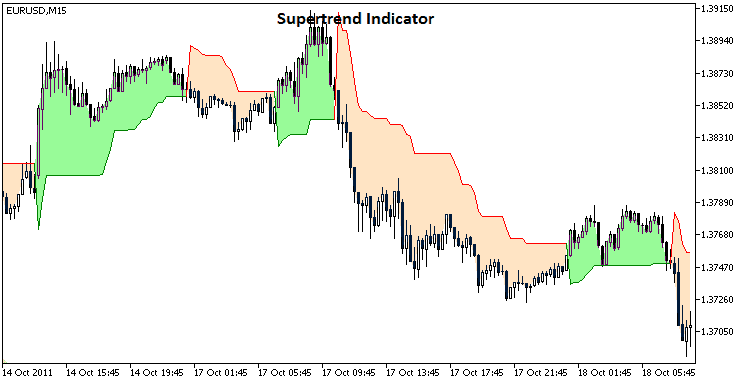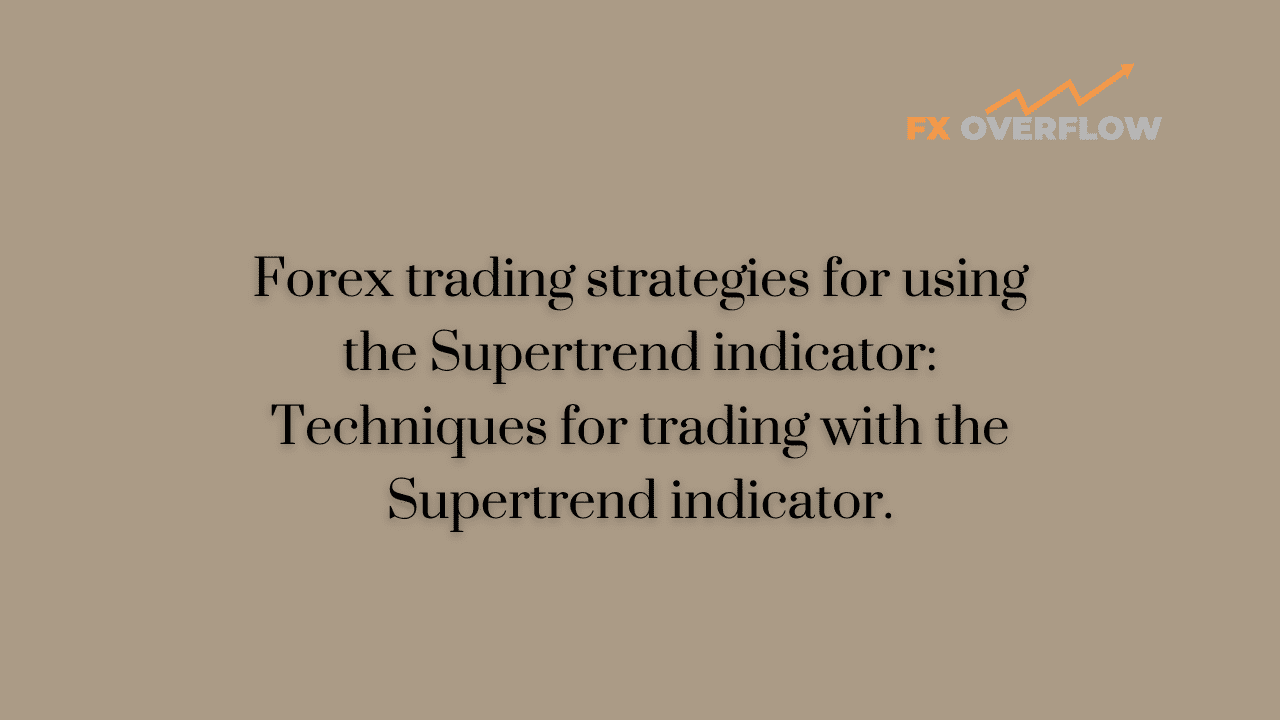Forex Trading Strategies for Using the Supertrend Indicator: Techniques for Trading with the Supertrend Indicator
In the fast-paced world of forex trading, successful traders are always on the lookout for tools that can provide them with a competitive edge. One such tool that has gained significant popularity among traders is the Supertrend indicator. This dynamic indicator has proven to be a valuable asset for traders seeking to capitalize on trends and make informed trading decisions. In this article, we will delve into the world of forex trading strategies centered around the Supertrend indicator, exploring techniques that can help traders navigate the markets more effectively.

Table Content
I. Understanding the Supertrend Indicator
1. Basic Supertrend Strategy: Trend Following
2. Supertrend with Moving Averages: Confirmation Strategy
3. Supertrend Breakout Strategy: Capitalizing on Volatility
4. Supertrend with Support and Resistance: Enhanced Entries
5. Supertrend with Multiple Timeframes: Comprehensive Analysis
II. Footnote
Understanding the Supertrend Indicator:
Before we delve into the various strategies, it's crucial to understand what the Supertrend indicator is and how it functions. The Supertrend indicator is a trend-following indicator that provides traders with insights into the direction of the prevailing trend and potential entry and exit points. It does so by plotting a line on the price chart, typically beneath the price in an uptrend and above the price in a downtrend.
The Supertrend line takes into account both price and volatility. When the price is above the Supertrend line, it suggests an uptrend, and when the price is below the line, it indicates a downtrend. The indicator also accounts for volatility, which allows it to adapt to changing market conditions.
1. Basic Supertrend Strategy: Trend Following
One of the simplest yet effective strategies involving the Supertrend indicator is trend following. Traders using this strategy aim to capture the momentum of an ongoing trend. To execute this strategy, follow these steps:
a) Identify the direction of the Supertrend line (above the price for a downtrend and below the price for an uptrend).
b) Wait for a pullback or a minor retracement against the prevailing trend.
c) Once the price begins to move back in the direction of the trend, consider entering a trade in alignment with the Supertrend direction.
This strategy allows traders to capitalize on the momentum of an established trend, potentially leading to profitable trades.
2. Supertrend with Moving Averages: Confirmation Strategy
Another effective approach involves combining the Supertrend indicator with moving averages for confirmation. This strategy aims to provide additional validation before entering a trade. Here's how to implement it:
a) Begin by plotting both the Supertrend indicator and a moving average (such as the 200-day moving average) on your price chart.
b) Look for instances where the Supertrend line and the moving average align in terms of direction.
c) Once the alignment is confirmed, consider entering a trade in the direction indicated by both the Supertrend indicator and the moving average.
By combining these two indicators, traders seek to increase their confidence in the validity of a potential trade setup.
3. Supertrend Breakout Strategy: Capitalizing on Volatility
The Supertrend indicator is not only useful for identifying trends but can also assist traders in capitalizing on breakout opportunities resulting from increased volatility. The following steps outline a Supertrend breakout strategy:
a. Monitor the Supertrend line to identify periods of low volatility where the line remains relatively flat.
b. Pay close attention to the price chart during these periods, looking for signs of impending volatility.
c. When a substantial price movement occurs and the Supertrend line begins to slope in the direction of the breakout, consider entering a trade in alignment with the breakout direction.
This strategy aims to capture significant price movements that often accompany periods of increased market volatility.
4. Supertrend with Support and Resistance: Enhanced Entries
Combining the Supertrend indicator with support and resistance levels can provide traders with enhanced entry points and a clearer understanding of potential price reversals. Here's how to use this strategy:
a) Plot the Supertrend indicator on your price chart and identify significant support and resistance levels.
b) When the Supertrend line aligns with a support level in an uptrend or a resistance level in a downtrend, it can act as confirmation for potential reversals.
c) Wait for the price to approach the Supertrend line and the support or resistance level, and consider entering a trade if other factors align.
This strategy aims to provide traders with more precise entry points and a higher probability of successful trades by combining multiple technical aspects.
5. Supertrend with Multiple Timeframes: Comprehensive Analysis
Incorporating multiple timeframes into your analysis can provide a more comprehensive understanding of the market's trend and direction. By using the Supertrend indicator on various timeframes, traders can gain insights into both short-term and long-term trends. Here's how to execute this strategy:
a) Apply the Supertrend indicator to different timeframes, such as the daily, 4-hour, and 1-hour charts.
b) Look for alignment in the direction of the Supertrend indicator across the different timeframes.
c) Consider entering a trade when the Supertrend direction aligns across multiple timeframes, indicating a strong and consistent trend.
This strategy enables traders to make well-informed decisions by considering the broader trend context across different timeframes.
Footnote
In summary, the Supertrend indicator is a versatile tool that can greatly enhance a trader's ability to identify trends, anticipate breakouts, and make informed trading decisions. By understanding the principles behind the indicator and implementing various strategies, traders can potentially improve their trading outcomes. However, it's important to note that no strategy is foolproof, and risk management remains a crucial aspect of any trading approach. As with any trading tool or strategy, practice, continuous learning, and adapting to changing market conditions are key to success in the dynamic world of forex trading.











Discussion